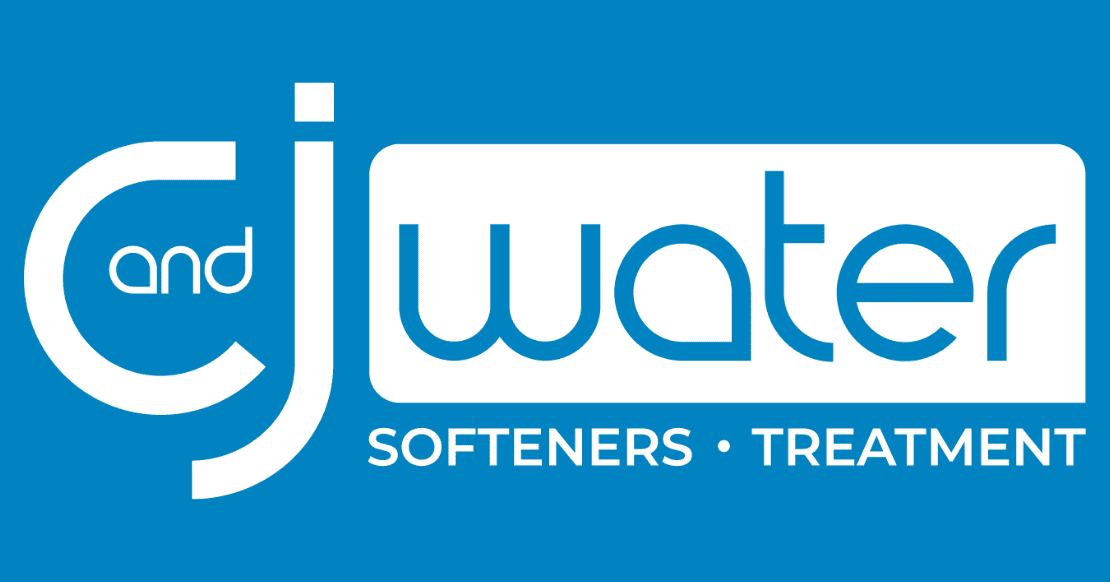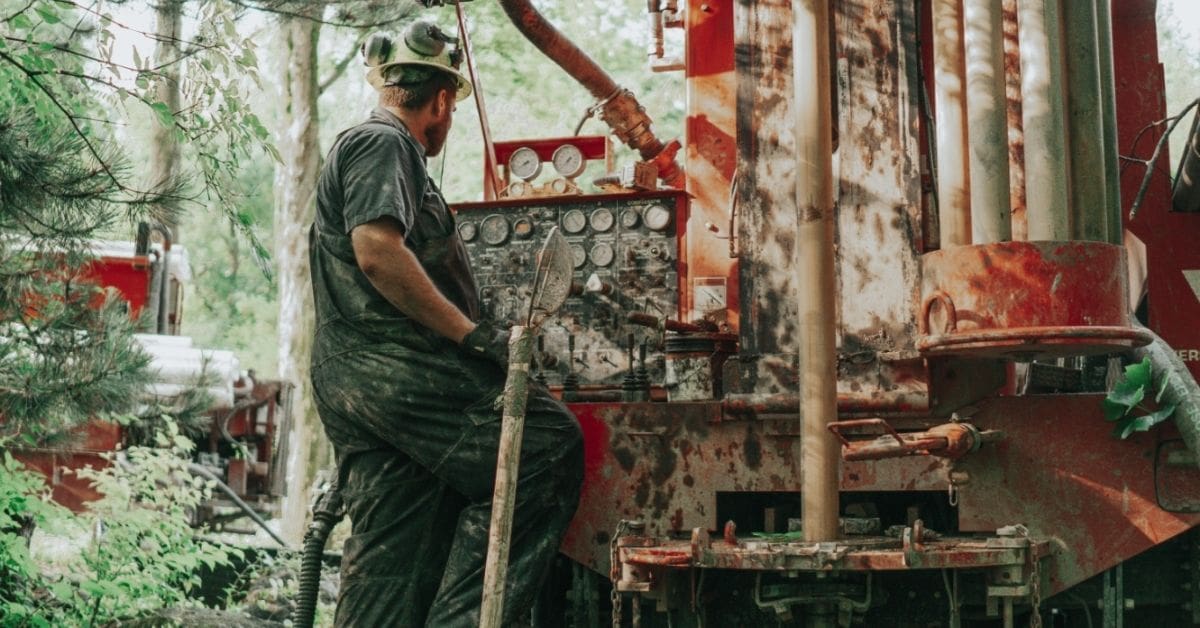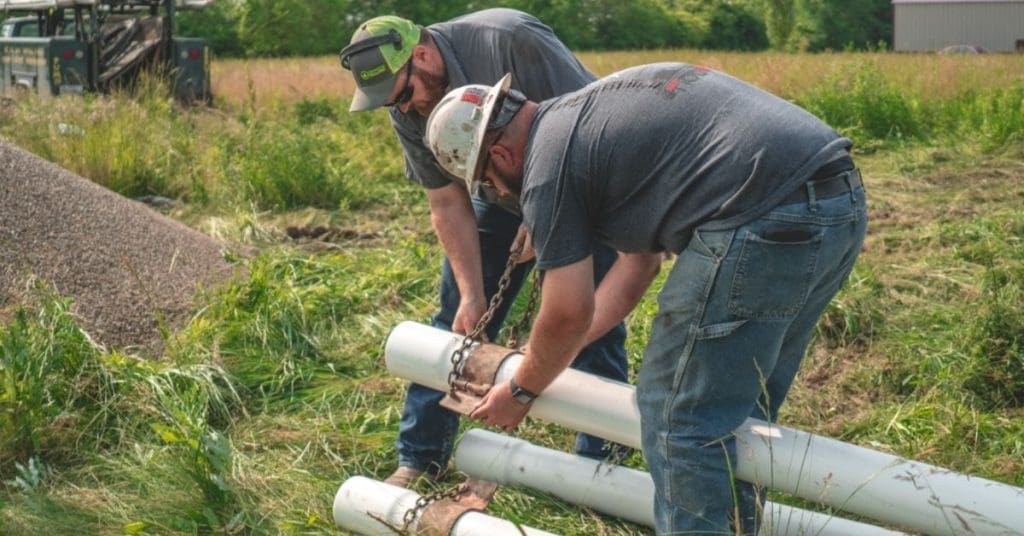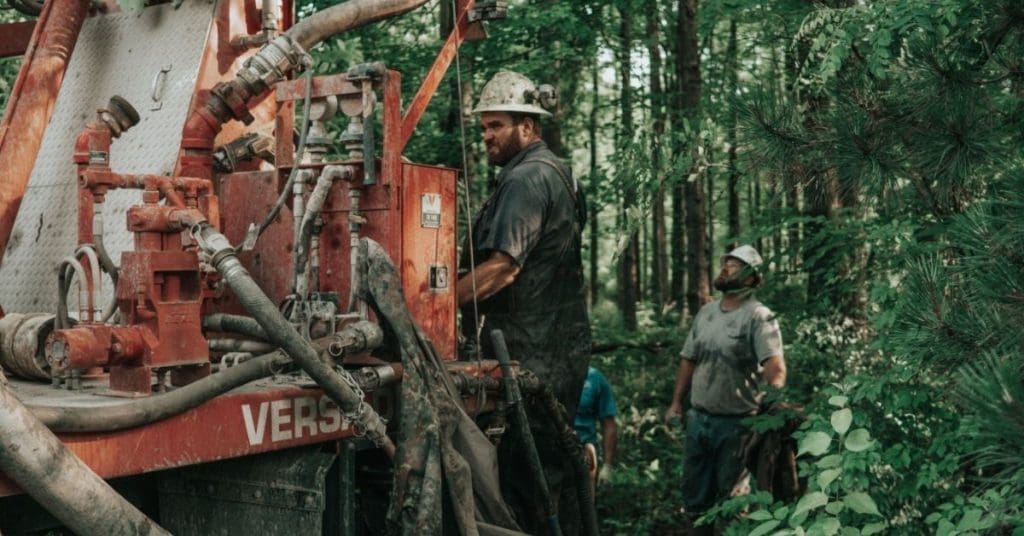Are you ready to get your hands dirty and dig a private well by hand? With about 30% of the world’s freshwater found in underground aquifers, it can be advantageous to have your own private water well to have access to this freshwater—but should you do it yourself? Safe, potable groundwater is one of our most precious natural resources. It can be contaminated and made dangerous, even totally useless for drinking, by improper water well drilling and pump installation practices.
We all love a good DIY project, but there are some things you should consider before tackling such a big task.
Drilling or digging a private water well yourself can be an enticing idea for those looking to save money or have more control over their water source. However, it’s important to approach this task cautiously and consider various factors before deciding to take on the project independently.
There are important considerations you should factor into your decision to drill or dig a well by hand. There’s quite a bit of research you’ll need to conduct to determine if a DIY well-drilling project will work for you. Drilling or digging a private water well is a complex and specialized endeavor that requires specialized equipment, knowledge, and expertise. Without a proper understanding of geology, hydrology, and drilling techniques, there is a high risk of encountering challenges or making costly mistakes along the way. Drilling or digging a private water well yourself is a complex undertaking that should be approached with caution. It is advisable to consult with professionals and gather all the necessary information and resources before deciding on the best course of action for your water well needs. This post will present some of the challenges to drilling your own private water well.
 Well Drilling Permits, Licensing, & Indiana State Regulations
Well Drilling Permits, Licensing, & Indiana State Regulations
Before attempting to drill or dig a private water well yourself, it’s crucial to understand the regulations and requirements in your area. Many regions have legal and permitting requirements that must be met before drilling a well, and failure to comply can result in fines or legal repercussions.
Keep in mind that many jurisdictions may require a licensed well installer to drill the well. The Indiana State Department of Health offers standards for the construction of wells and installation of pumps. If you have read all these Kafkaesque rules and regulations—and aren’t overwhelmed—drilling or digging your own private water well may be for you.
Well Drilling Cost and Equipment
Another important consideration is the cost of drilling or digging your own private water well. While you could save money on labor if you choose to do it yourself, there will be a cost of materials—casing, pressure grout for the annulus, the well screen at the bottom of the casing, gravel pack, the well pump, plumbing fixtures, the electrical wire for the well pump, the water line from the well to where you need water access, and other materials will start to add up. Also, many of these items are only sold to licensed distributors at a quantity discount, so you will probably end up paying retail prices. Furthermore, there could be costs for excavation equipment rental or DIY drilling kits.
Additionally, drilling a well involves heavy machinery, which requires proper safety measures and precautions to prevent accidents and injuries. Lack of experience or training in operating drilling equipment can be hazardous and put your safety at risk.
Consider also the financial implications of drilling a well yourself. While it may seem like a cost-effective option initially, there are expenses associated with equipment rental, permits, materials, and potential repairs if anything goes wrong. Hiring a professional well drilling contractor may ultimately save you time, money, and potential headaches in the long run.
Type of Water Well Needed
Basically, a well is a hole drilled into the ground to access water contained in an aquifer. A pipe and a well pump are used to pull water out of the ground, and a screen filters out unwanted particles that could clog the pipe. Wells come in different shapes and sizes, depending on the type of material the well is drilled into and how much water is being pumped out. More than 42 million people in the United States use individual or private wells to supply water for their families.
There are essentially three types of water wells.
- Bored or shallow wells are usually bored into an unconfined water source, generally found at depths of 100 feet or less.
- Consolidated or rock wells are drilled into a formation consisting entirely of a natural rock formation that contains no soil and does not collapse.
- Unconsolidated or sand wells are drilled into a formation consisting of soil, sand, gravel, or clay material that collapses upon itself.
Additionally, drilling or digging a well by hand is generally more appropriate for wells that will be used exclusively for light irrigation or landscaping. This is because contamination is less of a concern if the water isn’t going to be consumed by humans or animals—although you should still ensure your well is properly tested, especially if you will be eating vegetables and fruits grown with the water. You will also likely need professional equipment anyway to drill a well that is large enough to meet all of your household needs.
 Ground Conditions & Water Well Location
Ground Conditions & Water Well Location
Many think groundwater collects in and is withdrawn from underground lakes and rivers. Most groundwater exists in small pores between rock particles and in narrow fractures in rock formations. You’ll want to know what is the nature of the soil in your area. Wells are not easily drilled by hand when the groundwater supplies exist under rock layers. Although the water well drilling process isn’t impossible, it is certainly more difficult than if the water is located under softer material, such as sand. You will also need to know what is the depth of the groundwater supply. The depth of groundwater supply can vary greatly from region to region, so you can’t rely on what you read online to determine this. Some areas may have groundwater just a few feet below the surface, while others may have water hundreds of feet below the surface. Drilling a well by hand will be exponentially more difficult if you have to go hundreds of feet down.
Seasonal Considerations for Water Wells
The water table is often not static throughout the year, and there may be seasonal variations in the water levels. You will want to make sure to check the water table beneath your land over an extended timeframe. You don’t want to find out that you are only able to draw water at certain times of the year. Groundwater does not stay in one place. Gravity causes groundwater to flow downward and outward. Porosity—the size and number of void spaces in the formation—determines how much water can be stored in an aquifer. Permeability—the ability of water to move through void spaces—indicates how quickly the water will travel through the aquifer.
Water Well Placement
Unconsolidated aquifers usually transmit water more efficiently than bedrock aquifers. Groundwater flows easily through the spaces between loose sand and gravel particles. Water wells drilled into sand and gravel aquifers are often very productive.
Water flows out of pores and through fractures in consolidated bedrock aquifers. Productive water wells drilled into bedrock penetrate aquifers in fractured limestone, shale, or porous sandstone. Unfractured limestone, and non-porous formations, such as shale or siltstone, are likely to be dry.
Rainwater Flow & Water Well Placement
Also, you will want to install your well away from the area where rainwater naturally flows. This is because rainwater will likely pick up bacteria and contaminants from the ground and can contaminate the well water. Lastly, Indiana has regulations about the location of a water well in regard to any part of a septic system. Before planning your project, you will want to know the location of all nearby septic systems, including your neighbors’.
Competent Well-Drilling Contractor Considerations
If you are reading this and don’t want the challenge or hassle of digging a well yourself, consider an expert to drill your private water well. There is also some research that goes into hiring the right well-drilling contractor. Here are some questions to ask before making a decision:
Are They Licensed?
As mentioned above, Indiana has a morass of rules and regulations regarding private water wells. At C&J, our technicians have passed the state-required exam and obtained well driller and/or pump installer licenses. We also ensure they keep up with the state-required continuing education classes to maintain our licenses. Additionally, C&J always gets the proper permits and sends in the required documentation—such as well logs. There are many companies in the Indianapolis area that have either, never obtained the proper license, or had it suspended by the state health department. Be sure to check with state and local officials to prevent yourself from being duped by these shady contractors.
Are They Insured & Bonded?
In the unfortunate and rare case that something goes wrong or damage occurs, who will be responsible? This is an important question to ask the potential well-drilling contractor. C&J has more than adequate insurance and is bonded to work in Indianapolis and the surrounding area. Be sure you don’t end up in an interminable court battle by doing your homework before you hire someone.
Are They Experienced & Reputable?
New well drilling and service companies pop up from time, and their claims may seem attractive. Often, these companies are just the same shady guys—with a simple name change. C&J has been drilling wells for over 25 years, and we are still going strong! We have drilled wells all over Indiana, and are familiar with the geology and unique conditions an area may present. We have state-of-the-art equipment that allows us to achieve, not only the state requirements but also our own industry-leading standards.
You should also check on a company’s reputation by reading its online reviews. C&J has an A+ rating with the Better Business Bureau, and hundreds of five-star reviews on Facebook, Home Advisor, Angie’s List, and Google. All our costs, fees, and services are provided transparently in our estimates and contract. We pride ourselves on our ethics and honesty—our reputation speaks for itself.
What are the Costs and the Value?
At C&J Well Co, although we know our prices are generally somewhere in the industry average—not the most expensive, nor the cheapest—we believe the value we provide is second-to-none. In our water well drilling operation, we use non-corroding, stainless-steel well screens, and rust-proof fittings. We also ensure you get the best value by using cutting-edge Versadrill rigs, exceptional Grundfos pumps, fiberglass Flexlite pressure tanks that won’t rust, and backing our products and services with the best warranty in the industry. You may find someone to do the work cheaper, but you won’t get the best value than C&J, and we have financing options available too!
What Are Your Family’s Water Needs?
As mentioned above, drilling or digging your own water well might be advantageous for light irrigation or landscaping, but not really plausible for your family’s everyday needs. C&J has several options for homeowners—including those with low-producing wells. C&J’s services are not done once the well is drilled and developed. We can also run the water line to your home, pole barn, horse waterer, or whatever application you have in mind (including horizontal geothermal loops). We also have water treatment options to help mitigate bacteria, viruses, hard water, excessive iron, smelly and bad-tasting water, or any other water problems you may encounter.
Still Not Sure What to Do?
Drilling a well by hand is a complicated process, especially when it’s your first time. When in doubt, you can always discuss your options with a local well-drilling consultant, or you can hire a well drilling company to do it on your behalf. Contact C&J —we are here for all your well drilling, service, maintenance, and pump needs.



 Well Drilling Permits, Licensing, & Indiana State Regulations
Well Drilling Permits, Licensing, & Indiana State Regulations Ground Conditions & Water Well Location
Ground Conditions & Water Well Location






